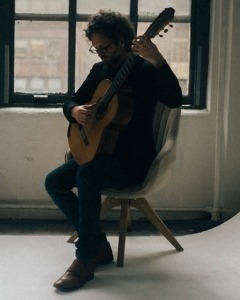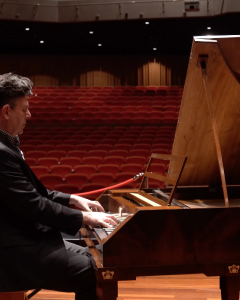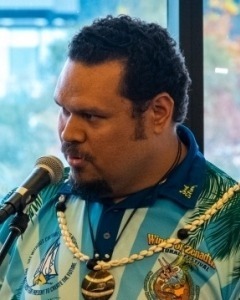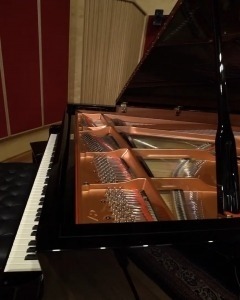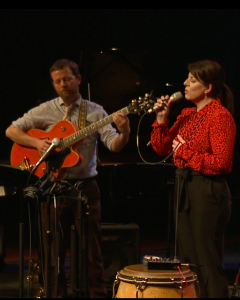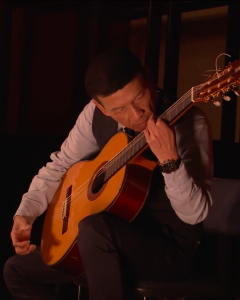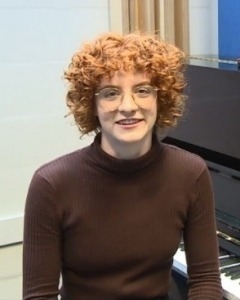Discovering Boccherini: a conversation with Dr Sally Walker on her new album
SHARE

ANU School of Music is proud to highlight the latest achievement of our Senior Lecturer in Classical Performance (Woodwind), Dr Sally Walker. Her new double album, "BOCCHERINI Chamber Works for Flute" (AVIE Records AV2698) showcases some of the lesser-known but profoundly inventive chamber works by Italian late baroque composer Luigi Boccherini. In celebration of the album’s release on August 16th, Sally and Friends will be performing in a concert at Wesley Uniting Church in Canberra on September 7th, Sydney Opera House September 8th and Adelaide Baroque Hall September 24th (Link: https://www.sallywalker.com.au/)
Given the significance of this album to Sally's artistic journey and its importance to our School, we conducted an interview with her to explore the inspiration behind this project, the collaboration with her fellow musicians, and how her dual roles as a performer and educator influence her work. Below, you’ll find the full Q&A session that sheds light on the heart of this remarkable project.
1. Can you tell us about the inspiration behind your new album, "Boccherini – Chamber Works for Flute"? What does the work mean to you, and what do you hope others will take from it?
The inspiration behind the double album “Boccherini: Chamber Works for Flute” came to me during the pandemic. Put simply, I fell in love with Boccherini’s music. His elegance, optimism, wonder and surprise were uplifting and, perhaps more importantly at that uncertain time, his clear melodies, harmonic progressions and structure made me feel reassured. I looked up works he had written for the flute - my instrument - and to my great surprise, there were a lot of works including it! I wondered why I had never heard these works before and ordered everything that was available. Postage was slow the pandemic, and it felt like Christmas morning when the sheet music finally arrived. I was thrilled with what was there (Op. 17 and Op. 19 Quintets, attrib. Quintet in C, G.443, the Duo Notturni Op. 38, G.467 and an attrib. flute concerto). I was keen to share this with others.
2. Tell us about the musicians you worked with on the album—how did you get to know them, and what was it like working with them?
This developed rather organically. I needed to play through the works to get to know them. When I was invited to play with the Adelaide Symphony for their Beethoven Symphony cycle, I took the sheet music with me. I already had a close friend there, oboist Celia Craig, with whom I could imagine playing the Quintet in C, G 443 and asked other terrific Adelaide-based Chamber Musicians known to me (violinists Elizabeth Layton and Alison Rayner, violist Stephen King, cellist Thomas Marlin, bassist Robert Nairn, bassoonist Mark Gaydon and hornist Sarah Barrett) to join me in a reading rehearsal. We immediately loved the music. It was a natural choice to continue the journey begun with these marvellous Adelaidean musicians and we could record in the new North Adelaide Baroque Hall, (constructed in 2022 using the original materials, rococo plasterwork and dimensions typical of late-Baroque architecture circa 1720). This totally complemented the music that we were recording. [Watch Sally Walker and Friends play Luigi Boccherini Op. 19, Quintet G.428: Adagio assai]
3. The Quintetto G.443 is included despite the contested authorship. Can you tell us more about this decision and why you felt it was important to include this piece? What is your take on the question of authorship?
Primarily because it is exquisite music and should be known and enjoyed through playing and listening to it. Secondarily, I think the intrigue is wonderful. It is refreshing to be confronted with a “who actually wrote this?” dilemma from over two centuries ago. If Boccherini did not write this work (and the catalogue-pouring-over that I have done does indicate that the work has been falsely attributed to him), then which composer was inventive enough to be mistaken for Boccherini? Why was the work not published this composer’s name? What is the story there?
4. Can you tell us how your career as a performer interacts with your work as an academic researcher and educator?
For me, research and performance are inextricably linked. That does not necessarily mean that you have always have a directly tangible link, such as a conference paper, related to what you are playing; it is about enquiry, being curious, looking behind the notes on the page, reading around about the composer and contemporaries, and the music and cultural context of the time. For example, in preparing for this recording, existing editions of the sheet music posed discrepancies in opus numbers; more than one doctoral dissertation has been devoted to this quagmire. We also had to decide how to interpret a number of key interpretative terms, there were also incorrect clefs for horn, as well as wrong notes and numerous dynamic/articulation absences or inconsistencies. However, the publisher’s task is not easy; many questions remain even if one has access to the original manuscripts – for instance, looking at Boccherini’s handwriting, it is often hard to be sure whether a slur is over two or three or four notes.
For more information about tour dates and to purchase the album, please visit [Dr Sally Walker’s official website]





